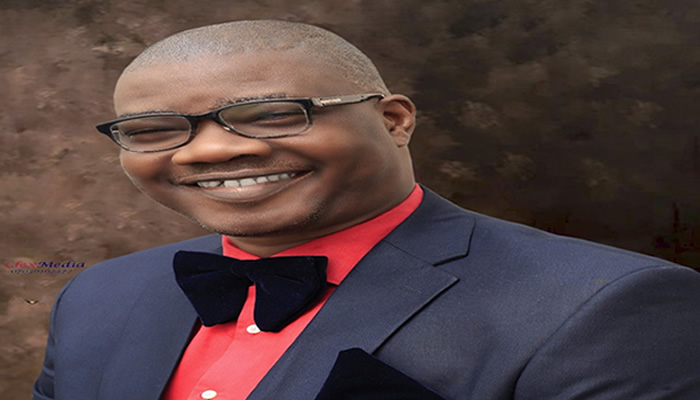
I was in Lagos, the State of Aquatic Splendour, last weekend from February 1 – 4, 2024. A non-governmental organisation, Peace and Development Project, had organised a three-day capacity-building retreat for the Department of Dispute and Conflict Resolution of the Niger Delta Development Commission and I was one of the resource persons. I presented a paper titled “Peace as a multistakeholder enterprise.” Other resource persons included: Prof. Abigail Ogwezzy of the University of Lagos who presented on “Communication and Interpersonal Conflict Management – Increasing Self-Awareness: Power Perspective”; Dr Tunde Akanni, Associate Professor at the Department of Mass Communication, Lagos State University presented on “NDDC and the imperatives of Multi-Track Diplomacy,” while Osaze Nosaze, Director Projectworks of Xrimedia and Francis Abayomi who is the Director of PEDEP jointly presented on “How to make impact in Disputes and Conflict Resolution.”
As the popular axiom says, “All work and no play makes Jack a dull boy,” in order to make the participants, organisers and resource persons bond and relax, an excursion was organised by PEDEP to John Randle Centre for Yoruba Culture and History (better known as John Randle Centre) located at Onikan, Lagos Island, last Saturday, February 3, 2024. As a culture enthusiast, I was wowed by what I saw at the museum. Indeed, every one of us who went, the majority of whom were non-Yoruba, was so excited about the visit to the centre.
By way of introduction, I have been involved in the promotion of not only Yoruba culture but Nigeria’s culture and history. Every day in the last six months, I have engaged in a daily quiz competition of sorts where I ask five questions on Yoruba culture, people and history. I ask questions on food, music, proverbs, folklore, current affairs, towns and cities of Yoruba land and related matters. My fans take time to answer the questions while many others who do not know the right answers get to know about Yoruba culture and traditions.
Apart from the quiz, I also promote Yoruba culture and those of other tribes in Nigeria through my dressing. I have over 40 caps from different tribes across Nigeria. I have the Niger Delta caps, the Ibibio, Efiks, Igbo, Igala, Tiv, Idoma, Igede, Hausa, Adamawa, and Yoruba. My wardrobe is also made up of attires from many ethnic groups. I am proud to flaunt these wears on my several media interview platforms where I go by the sobriquet of “Asorogbayi” meaning one who talks to earn honour.
I have visited 33 out of the 36 states of Nigeria and at present live in Abuja, the Federal Capital Territory. The three states I haven’t visited are Taraba, Yobe and Kebbi. All others I have been to and slept over in each of them. Interestingly, my visit to each of the states also affords me the opportunity to go to their historic sites and museums. In Abuja, I have visited most of the tourist sites such as the Millennium Park, the Aso Villa, the National Assembly, the National Children’s Park and Zoo and the Jabi Lake. In Plateau State, I have been to Shere Hills, Jos Museum, Naraguta Leather Works and the Museum of Nigeria for Traditional Architecture. In Niger State, I have been to Gurara Falls and Zuma Rock. In Kogi State, I have visited Mount Patti, Lokoja, Lord Luggard’s first residence and the confluence of Rivers Niger and Benue also in Lokoja.
In Kaduna, I have been to the Emir of Zazzau Palace in Zaria. In Kano, I have visited Kofar Mata Dyeing Pits, Kano City Walls, and Kurmi Market. In Katsina, I have been to the Emir of Daura Palace and Kusugu Well, Daura where Abu Yazid Bin Abdullahi, known as Bayajidda, vanquished a serpent named Sarki. In Bauchi, I have been to Yankari National Park, Emir of Bauchi Palace, the Tomb of the First Prime Minister of Nigeria, Alhaji Abubakar Tafawa Balewa and Wikki Warm Springs Resort. In Borno State, I have been to the Shehu of Borno Palace in Maiduguri.
In Cross River State, I have visited the National Museum Calabar, Tinapa Resort and Obudu Mountain Resort. In Edo State, I have been to the Royal Palace of the Oba of Benin, the National Museum in Benin and Igun-Eronwon quarters popularly known as Igun Street which is the home of the Brass/Bronze casting industries in Benin City. In Abia, I have taken time off my official assignment to visit the Abia State National War Museum. This museum was set up in 1985 to remind people of the aftermath of the Civil War that took place in the state. It contains war relics, bunkers, etc. In Ekiti State, I have been to the Ikogosi Warm Springs and the Fajuyi Memorial Park. In Osun State, I have gone to see the Oranyan Staff in Ile Ife, the Ooni of Ife Palace and the Ife Museum.
In Oyo State, I have visited the Agodi Garden, Ibadan University Zoological Garden, Captain Bower’s Tower at Oke Are, and Mapo Hall built in 1929. In Ogun State, I have been to and climbed the Olumo Rock, and visited Itoku Market where Tie and Dye local fabrics called Adire and Kampala are on sale. I have also been to Centenary Hall and Alake of Egbaland’s Palace. Before my last Saturday’s visit to John Randle Centre, I have been to several tourist’ sites in Lagos. Among them are: the first storey building in Nigeria located in Badagry, Badagry Slave Museum and Black History Museum, Whispering Palm Beach, Elegushi Beach and Bar Beach. Others include the National Art Theatre at Orile Iganmu, Tafawa Balewa Square, and Muson Centre.
Outside of Nigeria, during my visit to Geneva, Switzerland in 2005, I visited Jet d’Eau which is a fountain shooting up in a single stream more than 121 metres; the Flower Clock which is a colourful flowerbed that looks like a clock face with real mechanical hands; Palais des Nations which is the home of the United Nations in Geneve’s Ariana Park. I also took a boat ride on Lake Geneva. When I went to the United States of America, I was privileged to visit the White House which is the seat of power; the Lincoln Memorial, the United States Capitol, and the headquarters of the Voice of America. In Ghana, I have been to Cape Coast Castle, Kakum National Park, Kwame Nkrumah Memorial Park and Elmina Castle. In 2014 when I was on an official visit to Egypt, I was able to squeeze some time to visit the Pyramids of Giza and the Great Sphinx. In 2016 during my visit to Uganda, I was able to visit the Equator line at Kayabwe Town. Also, I was at Nabugabo Sand Beach Resort, Masaka.
Why am I thrilled with the John Randle Centre? It is because it is a repository of all that Yoruba people are. Touring the site last Saturday, I saw the images of different Yoruba deities, dresses, artefacts, drums, implements, regalia, and oral history in an audio-visual form. There was also a swimming pool originally built in 1928. Information on the website of the centre says facilities at the new centre will include: a world-class permanent exhibition and a temporary exhibition space; a library with physical and digital capacities, flexible multipurpose rooms, seminar and performance spaces, a gift shop and lounge, two separate restaurants – one of which is an open-air gathering space with adjoining restaurant/bar, a public swimming pool, a landscaped area with a market square and car parking.
According to the Lagos State Governor, Babajide Sanwo-Olu, “The John Randle Centre is the first of many initiatives aimed at the preservation of the heritage of the Yoruba through the celebration and preservation of history and culture, the regeneration of decades-old public green space, public recreation facilities, and the restoration of civic pride……” Although the centre was hurriedly commissioned by former President Muhammadu Buhari on January 24, 2023, the centre is not fully completed, and the projection is that it will be fully open to the public by April 2024. If you are truly a Yoruba son or daughter, this centre is a must-see for you and your children as well as loved ones. Kudos to my namesake, Babajide Sanwo-Olu, for this world-class edifice. I do hope it will be well maintained.
X: @jideojong





